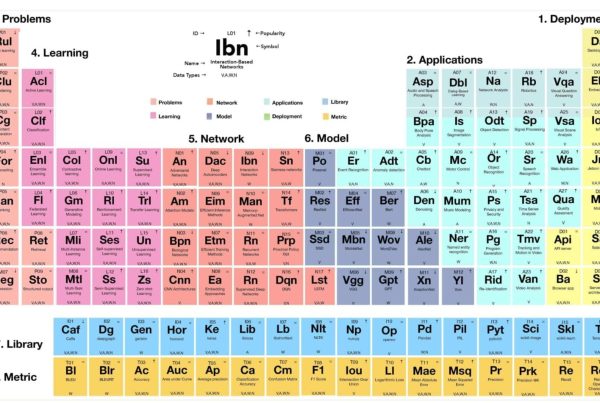AI grant writing involves using artificial intelligence technologies to assist in the creation, editing, and submission of grant proposals. AI can help streamline the grant writing process by automating repetitive tasks, providing data analysis, and generating content that aligns with funding requirements.
How Can You Use AI for Grant Writing?
AI can be used in several ways to enhance the grant writing process:
- Drafting Proposals: AI can generate drafts for various sections of a grant proposal, including abstracts, project timelines, and evaluation plans.
- Editing and Proofreading: AI tools can identify and correct grammatical errors, ensure consistency, and enhance the readability of proposals.
- Data Integration: AI can assist in incorporating relevant data and statistics into the narrative, making a compelling case for support.
- Formatting: AI can automate formatting tasks, ensuring proposals meet specific guidelines and standards.
- Idea Generation: AI can provide inspiration and suggestions for content, helping to overcome writer’s block.
Benefits of AI Grant Writing
Using AI for grant writing offers several benefits:
- Time Efficiency: AI can significantly reduce the time spent on repetitive tasks, allowing grant writers to focus on more strategic aspects of the proposal.
- Enhanced Quality: AI tools can improve the precision and clarity of writing, resulting in higher-quality proposals.
- Consistency: AI ensures that the tone, style, and format are consistent across all sections of the proposal.
- Data Handling: AI can analyse and integrate large volumes of data, enhancing the evidence base of the proposal.
AI Grant Writing Tools
There are various AI tools available to support grant writing. These tools offer different features and benefits, tailored to meet the needs of grant writers. Some popular AI grant writing tools include SpeedDraft, ChatGPT, and Fundwriter.ai.
SpeedDraft: AI Grant Writing Tool
SpeedDraft is a specialised tool designed to automate and streamline the creation of complex documents and grant applications (like EIC Accelerator and EU Horizon) It leverages privacy-preserving LLMs to offer a secure and efficient drafting process, ensuring data confidentiality and customisation tailored to the unique needs of organisations applying for grants.
Key Features:
- Automation of Draft Creation:
- Automates the generation of drafts for complex documents.
- Includes pre-loaded templates for grants such as EIC and EU Horizon, ensuring all sections are organised.
- Iterative Refinement and Customization:
- Allows users to refine and tailor content through an iterative process.
- Supports embedding unique insights and expertise (“secret sauce”) into templates, ensuring a stronger win opportunity.
- Real-Time Feedback:
- Provides immediate feedback on consistency, quality, and style.
- Users can validate and control the AI’s processing and outputs, ensuring compliance with grant guidelines.
- Data Privacy and Security:
- Built with privacy-preserving LLMs that ensure data remains confidential.
- Operates within “Chinese walls,” meaning data doesn’t leave the user’s cloud environment, protecting sensitive organisational information.
- Integration and Usability:
- Supports integration with various data sources, including documents, websites, and transcripts.
- Offers bespoke templates that are specifically designed for major EU grants, making the process more efficient and user-friendly.
How Template Customisation Works:
- Choose Your Grant Application Template:
- Start by selecting from pre-loaded templates specifically designed for EU grants like EIC and EU Horizon.
- Construct Your Template:
- Customize the template by embedding your “secret sauce,” ensuring unique value is added while meeting EU grant criteria.
- Maintain data separation with Chinese walls to protect proprietary information.
- Identify the Ingredient List:
- Gather supporting materials such as decks, websites, transcripts, and documents relevant to the EU grant application.
- Use the best examples to enhance the quality of the draft.
- Summary Feature:
- Obtain a concise summary of uploaded documents.
- Gain insights into AI processing and validate its interpretation to control draft generation, ensuring alignment with EU grant standards.
- Generate, Edit, Iterate:
- Produce the draft, make necessary edits, and iterate as needed to achieve the desired outcome and meet grant specifications.
SpeedDraft vs ChatGPT
Feature |
ChatGPT |
SpeedDraft |
| Upload Size | Limited | Unlimited |
| Data Confidentiality | Enterprise-level subscription | Yes |
| Integration in Google Docs, Microsoft | No | Yes |
| Bespoke Templates | No | Yes |
| Summary Feature | No | Yes |
| Built-in Blueprints | No | Yes |
| Tailored Content Generation | Broad general knowledge | Industry-specific |
| Draft Quality (Uses Your Expertise) | Generic corpus of knowledge | User-provided knowledge base |
| Accessibility and Integration | Standalone platforms | Google Add-On or MS Add-In |
| Interactive Editing | General knowledge-based | User-provided knowledge base |
| Template Customisation | No | Yes |
Tailored Content Generation
- SpeedDraft: Tailored specifically for generating professional drafts such as proposals and reports, addressing specific industry requirements and standards. It has no limits on the number of pages that can be produced, allowing for extensive drafts without restrictions.
- ChatGPT: Designed for versatility across various topics and applications without accounting for specific industry or domain expertise. It is typically limited to around 4,096 characters per response, which may require breaking up longer drafts into multiple interactions. This can be less efficient and coherent for producing extensive documents.
Draft Quality (Uses Your Expertise)
- SpeedDraft: Leverages user-provided knowledge base to tailor proposals and reports, ensuring content is highly relevant and personalised.
- ChatGPT: Generates drafts based on a predetermined and generic corpus of knowledge, which may lack specific contextual relevance.
Accessibility and Integration
- SpeedDraft: Available as a Google Add-On or MS Add-In, providing seamless integration with popular office tools. This allows users to work within familiar environments, enhancing productivity and convenience.
- ChatGPT: Primarily accessed via standalone platforms without specific integrations with office tools. It does not offer direct integration with tools like Google Docs or Microsoft Word, which can limit ease of use for those who rely heavily on these platforms.
Interactive Editing
- SpeedDraft: Allows users to chat with the LLM to request specific edits on the generated drafts, providing an interactive and responsive editing experience. Edits and feedback are informed by the user-provided knowledge base, ensuring responses are highly relevant and precise.
- ChatGPT: Users can request edits, but the interaction is based on general knowledge and may require more detailed instructions and multiple iterations to achieve the desired results. This process can be less efficient, as the AI might need clarification and additional context to provide accurate edits.
Built-in Templates
- SpeedDraft: Offers built-in blueprints for specific types of drafts such as EIT, EIC, and HORIZON proposals. Users can quickly generate drafts using predefined templates, significantly speeding up the writing process. By reusing the same template for similar projects and updating the knowledge base, users avoid repetitive prompting and ensure consistency across similar documents.
- ChatGPT: Does not provide predefined templates for specific types of drafts. Users need to manually create and refine prompts for each new request, which can be very time-consuming.
How to Use AI for Grant Writing
Using AI for grant writing involves a few key steps:
- Choose the Right Tool: Select an AI tool that fits your needs, such as SpeedDraft.
- Input Detailed Information: Provide the AI with detailed prompts and relevant data about your organisation and project.
- Review and Edit: Carefully review the AI-generated content, making necessary edits to ensure accuracy and alignment with funding requirements.
- Customise and Finalise: Tailor the content to reflect the unique aspects of your project and finalise the proposal for submission.
AI Grant Writing vs Traditional Grant Writing
AI grant writing offers several advantages over traditional methods, but it’s essential to understand the pros and cons.
Pros
- Efficiency: AI can handle repetitive tasks quickly, freeing up time for more critical activities.
- Accuracy: AI tools can enhance the quality and consistency of writing.
- Data Integration: AI can incorporate relevant data seamlessly.
Cons
- Learning Curve: There may be a learning curve in understanding how to use AI tools effectively.
- Loss of Personal Touch: AI-generated content may lack the personal touch and emotional appeal that human writers can provide.
To overcome these objections, SpeedDraft offers features that combine the efficiency of AI with the ability to customise and personalise proposals, ensuring a balanced approach.
Final Thoughts
AI grant writing significantly enhances the efficiency and quality of grant proposals by automating repetitive tasks, improving consistency, and integrating data seamlessly. Tools like SpeedDraft offer tailored templates and real-time feedback, ensuring high-quality submissions that meet specific funding requirements while maintaining data privacy. By combining AI’s capabilities with human expertise, grant writers can create compelling and personalixed proposals, overcoming challenges like the loss of personal touch and the learning curve associated with AI tools.
Subscribe to our newsletter
Latest Posts




